30-mm guns of our armored vehicles: fighting infantry in trenches and ATGM crews
To date, automatic 30-mm guns remain the main weapons domestic combat vehicles of the light class. They are equipped with infantry fighting vehicles, landing vehicles, armored personnel carriers and even armored cars. In general, we can say that these guns have already become a kind of gold standard for high firepower, which can be countered by a wide range of threats on the battlefield.
In this material, based on large-scale "virtual" studies conducted in the USSR, we will consider the effectiveness of 30-mm high-explosive fragmentation shells against enemy manpower and anti-tank systems hidden in trenches.
Comparison Method
Usually, the data obtained with the help of calculations are treated with distrust, preferring to them the results of full-scale tests at the test site. This is partly true and not without reason: most of the "paper" firing is calculated on the basis of the given areas of destruction. Roughly speaking, a tabular spread of fragments in terms of range, angle of spread and penetration is taken and superimposed on a map with targets. Such an approach, of course, will be very different from reality.
In this study, the targets - infantry squads in trenches and ATGM crews - are taken in the form of three-dimensional models. Their parameters such as dimensions, the level of security in a particular projection, as well as various options for location on the battlefield are taken into account. For each target, up to 200 shell explosions were calculated at different points. Accordingly, for each projectile, in accordance with its speed, fragmentation flow and shielding of some target elements by others, the probability of hit is calculated.
The defeat of an infantry squad means that more than a third of its strength is disabled. The defeat of the anti-tank system is the incapacitation of the complex itself, or the destruction of its calculation of three people.
What do we shoot?
In domestic infantry fighting vehicles and infantry fighting vehicles, as a rule, high-explosive fragmentation shells with a contact fuse are used to combat enemy manpower, so this type of ammunition is taken as the basis. It is also worth noting that shots of increased mass are accepted as opponents to shots of 30-mm cannons without reference to the caliber, according to the characteristics of which one can trace the increase in power due to the increased charge of explosives, lethality of the fragmentation flow, etc. Their list is presented below.
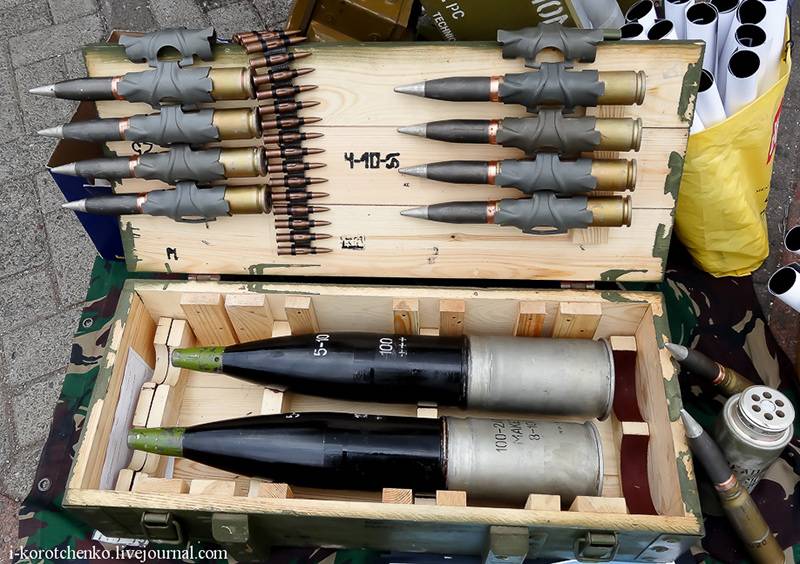
1. Standard high-explosive fragmentation 30-mm shot weighing 800 grams with an initial flight speed of less than 1 m/s. Technical dispersion: 000 mrad. Burst length: 0,6 shots.
2. A small-caliber shot with a weight increased to 2,5 kg. Initial speed over 1 m/s. Technical dispersion: 000 mrad. Burst length: 1,5 shots.
3. Shot of small caliber weighing 3,6 kg. The initial speed is less than 900 m/s. Technical dispersion: 1,5 mrad. Burst length: 4 shots.
4. Shot of medium caliber weighing 8,5 kg. The initial speed is less than 700 m/s. Technical dispersion: 0,25 mrad. Burst length: 1 shot.
5. Shot of a large caliber weighing 16 kg. The initial speed is not more than 300 m/s. Technical dispersion 0,3 mrad. Burst length: 1 shot.
The mass of ammunition of "virtual" infantry fighting vehicles with all shells and their corresponding guns was taken as unchanged and amounted to 500 kg. Fire on targets was carried out only in motion.
Target engagement capabilities
One of the important parameters characterizing the capabilities of a cannon and shells is the probability of hitting the enemy from the first shot, or from the first burst, if we are talking about an automatic weapon. Here, the 30-mm machine showed very good results, although it lost to a large caliber in one of the aspects.
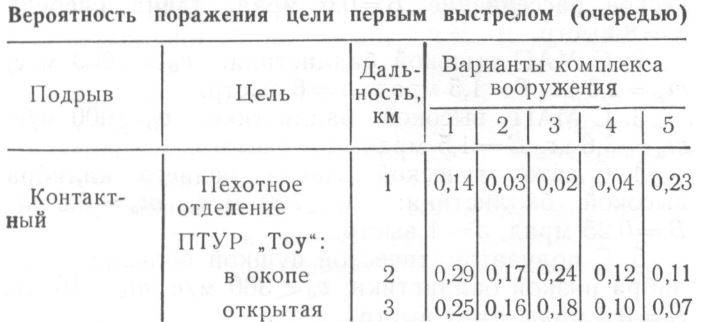
The probability of hitting a target of the Tou ATGM type in a trench at a distance of 2 km from a 30-mm automatic gun with standard shells from the first stage turned out to be the highest and amounted to 29%. Weighted projectiles of small and medium caliber showed a probability of 12 to 24%. As for the heaviest shot weighing 16 kg, it turned out to be an outsider, giving only 11% of the probability of hitting a covered ATGM.
The indicators for the same ATGM "Tou", but already outside the trench and at a distance of 3 km, turned out to be somewhat different. The 30mm cannon with standard rounds again came out victorious, giving out a 25% chance of hitting the first round. Heavier shells of small and medium caliber gave from 10 to 16%. The heaviest and largest caliber - 7%.
With the defeat of an infantry squad sheltered in a trench at a distance of 1 km, the situation changed dramatically. The 30-mm automatic cannon with standard shells overcame its weighted small-caliber and medium-caliber opponents with a devastating score: 14% versus 2-4%. But the winner was a large caliber with a 16-kg shot, giving out 23%.
A similar trend continued in the course of determining the number of targets that the machine can hit within one ammunition load. It makes no sense to describe the indicator for each shot option, since everything is quite clearly demonstrated in the figure attached below.
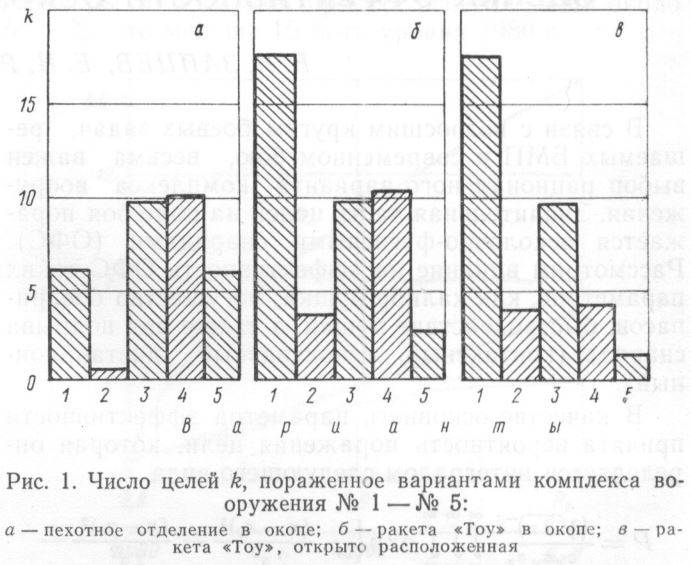
Conclusion
What can be said based on the data presented?
Firstly, all compared shots, with the exception of the 30mm standard, are still "virtual" or calculated. In fact, small-caliber shots weighing up to 3,6 kg with the indicated ballistic data are more likely to be tabular measures by which one or another projectile can be evaluated. The same goes for medium caliber. In this situation, regular 30-mm guns and shells for them show decent results and, in general, are the golden mean when choosing light weapons for infantry fighting vehicles, armored personnel carriers, etc.
Secondly, the experiment showed the correctness of the choice of the BMP-3 and BMD-4 weapons complex. Although the 30mm assault rifle is up to the task, infantry hidden in trenches and trenches is a difficult target for obvious reasons. It is important to note here that the large caliber indicated in the experimental conditions is in many ways similar to the shots of a 100-mm low-impulse cannon, so there is every reason to believe that these machines are a kind and very effective symbiosis of two guns that are quite well suited for both covered, and for openly located enemy manpower.
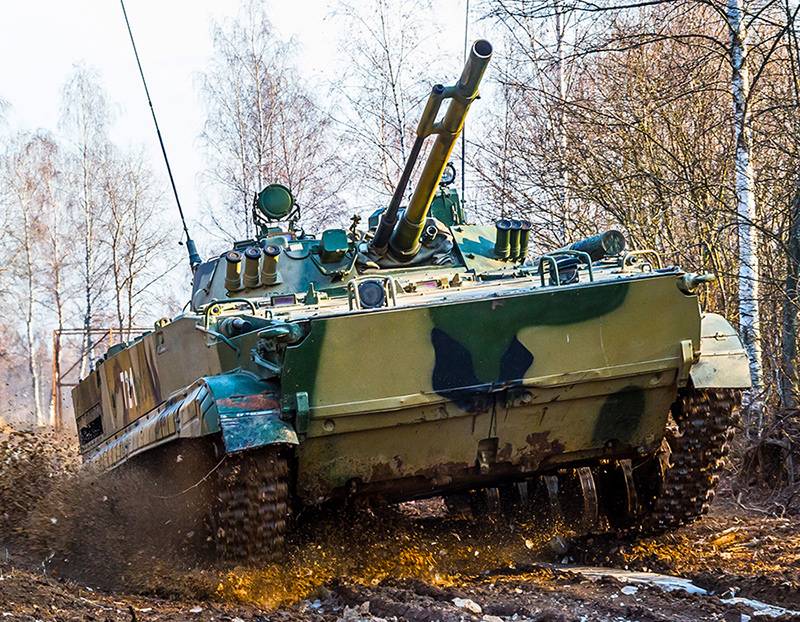
Thirdly, the data still show that switching to a 57-mm automatic cannon, which has been walking around exhibitions for more than a year, would be highly preferable. Combining the increased power of a high-explosive fragmentation projectile and the possibility of using ammunition with remote detonation and ready-made submunitions, this weapon can significantly enhance the fire capabilities of infantry fighting vehicles and other vehicles of this class.
Information sources:
M. Baryatinsky. "Soviet armored vehicles 1945–1995". Armor collection 2000 No. 03 (30).
E. N. Zaitsev, E. N. Rozov et al. “Evaluation of the effectiveness of high-explosive fragmentation shells of infantry fighting vehicles”, 1988.
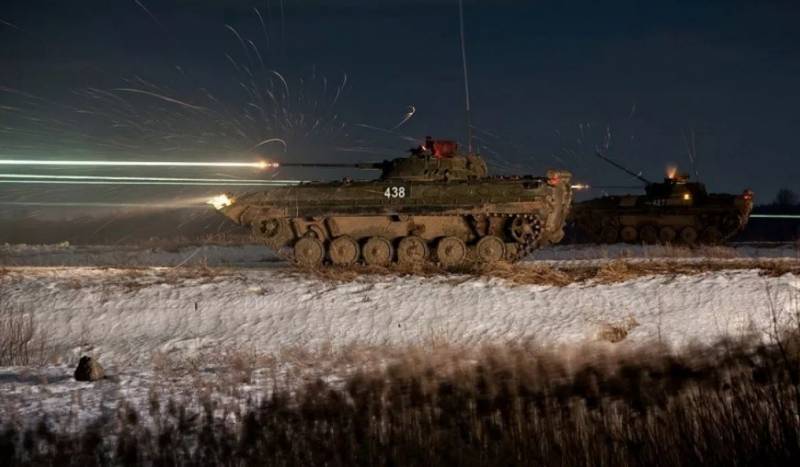
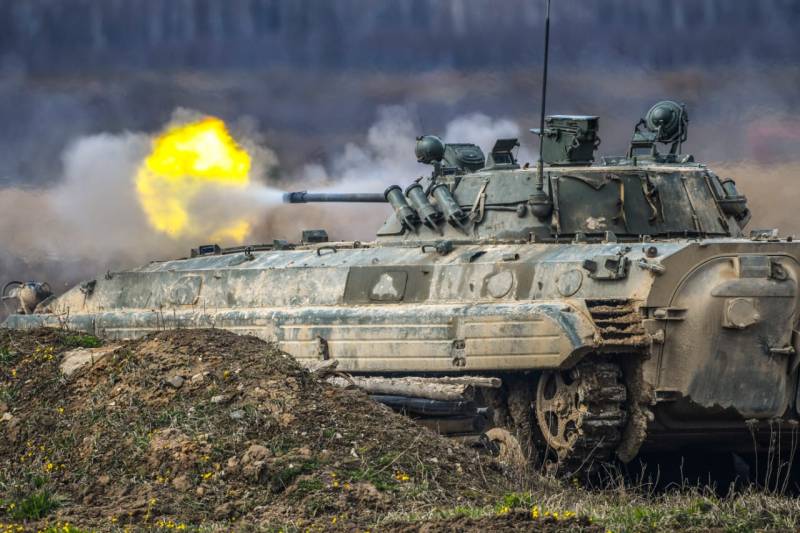
Information